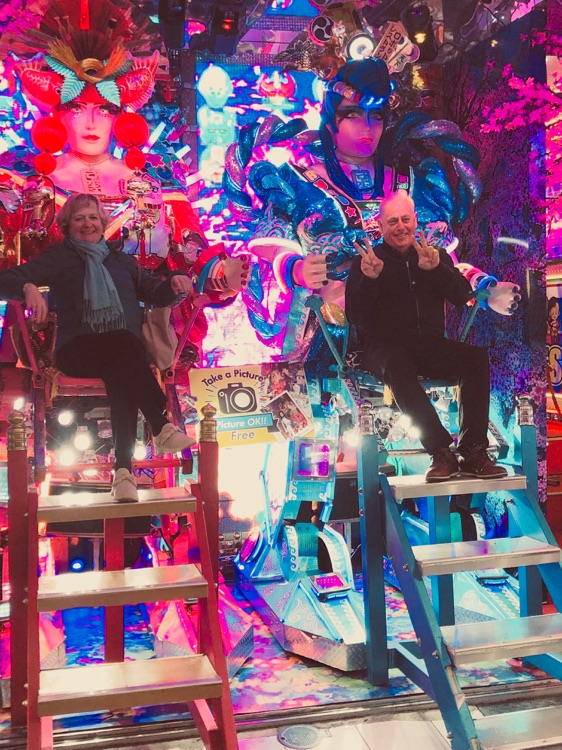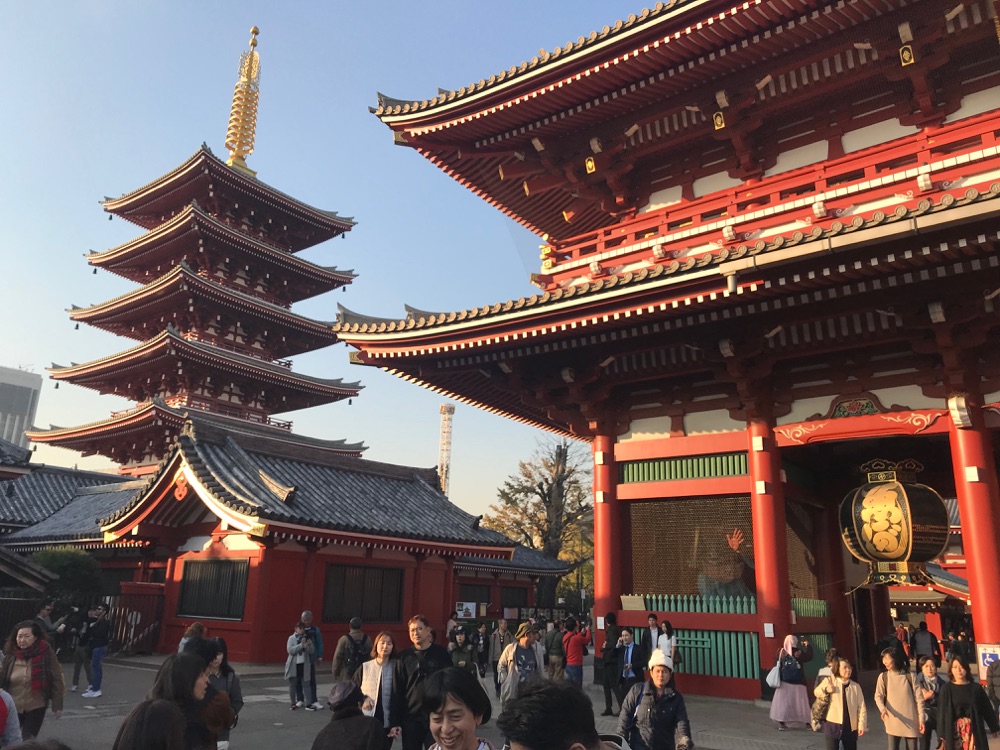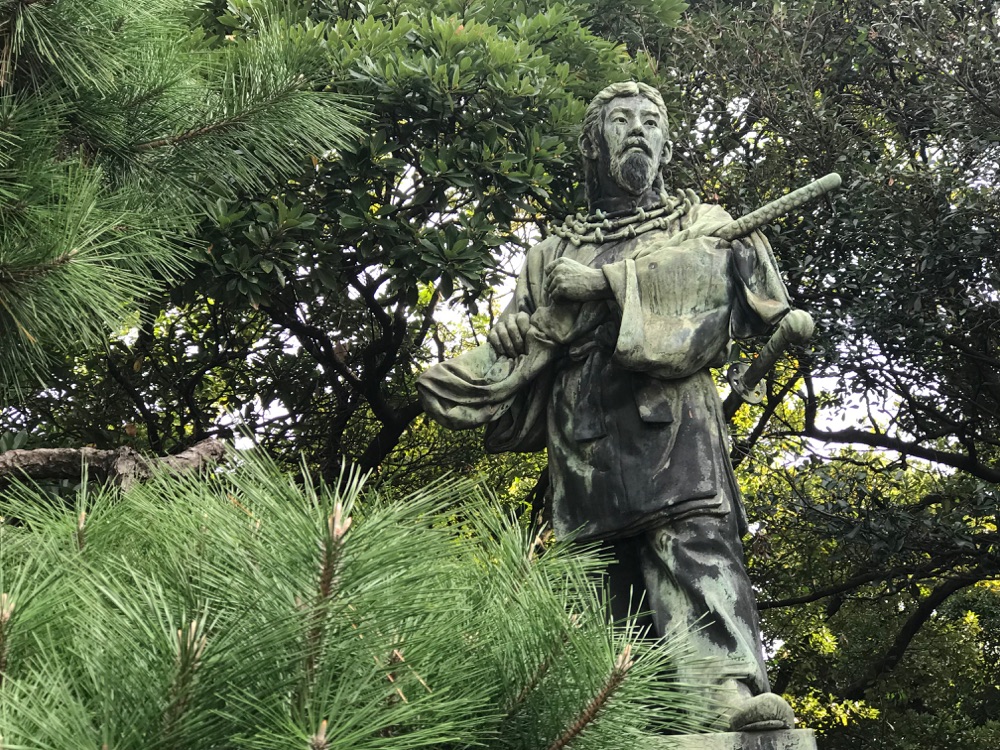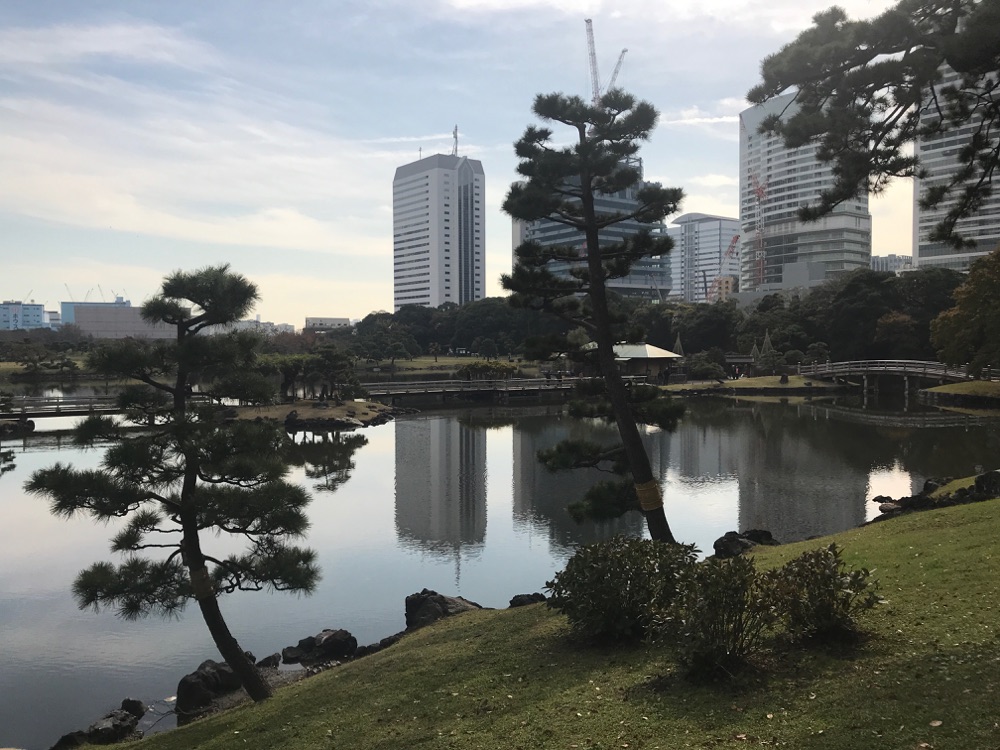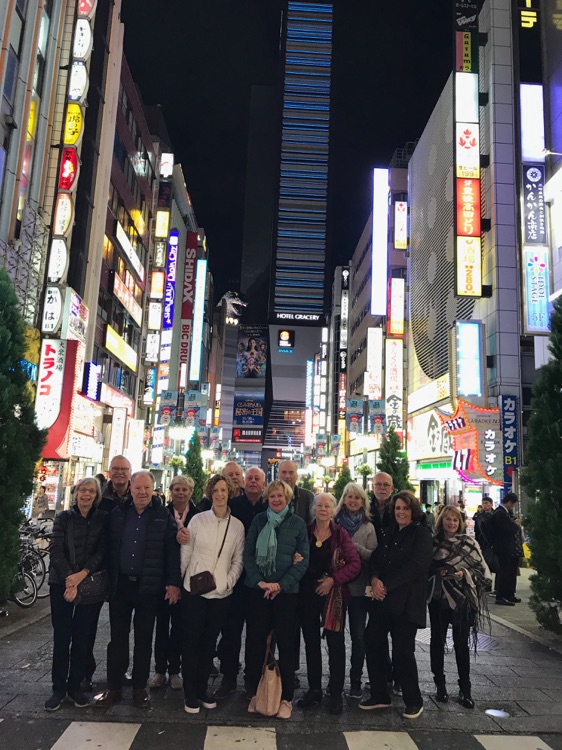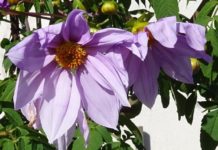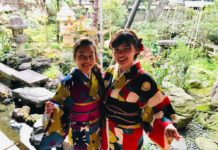
My Japan tour got under way with a walking tour of the Kabukicho area of Shinjuku followed by a fun welcome dinner at a yakitori restaurant.

Kabukicho is the entertainment district, sometimes compared to Amsterdam’s Red Light area, but with a lot less accent on “love shops” and more emphasis on restaurants, bars and nightclubs.
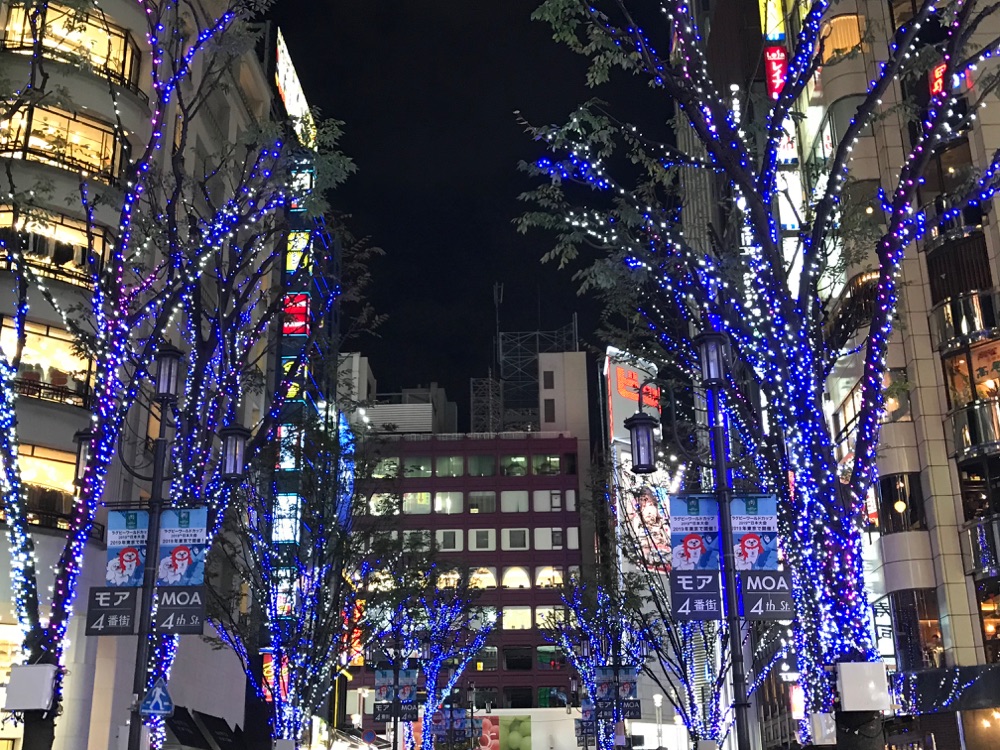
This is partly why Kabukicho is also described as the “sleepless town” meaning the part of Tokyo that never sleeps.
Our interest, however, was mainly in the spectacular neon lights of the buildings and billboards that light up the night in a particularly energizing way.
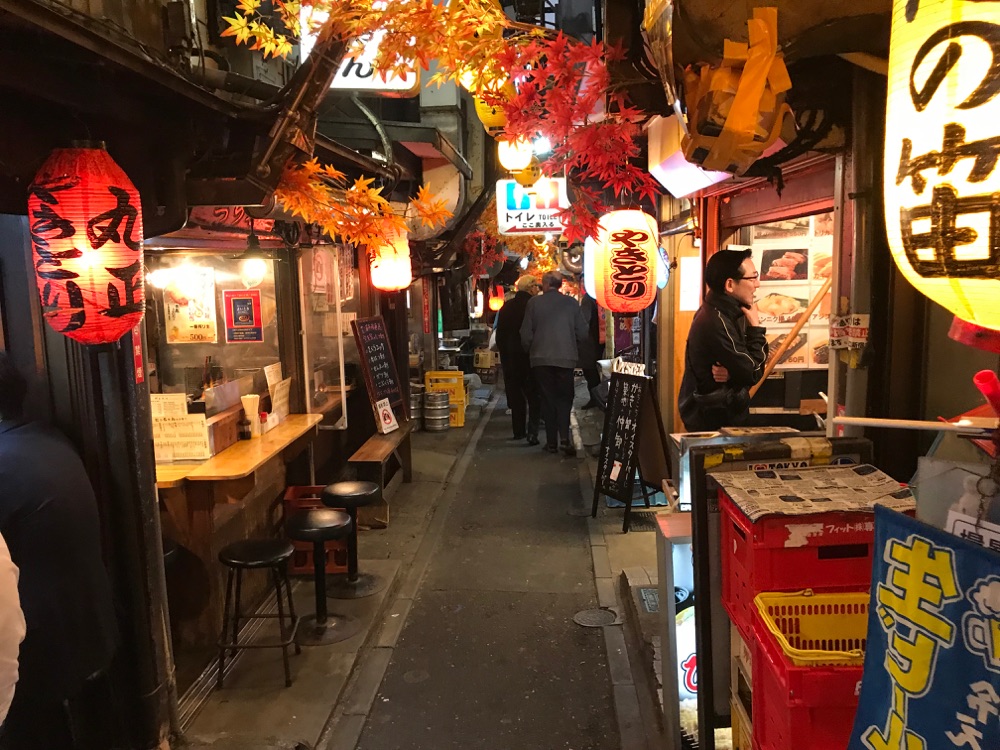
In Kabukicho, we started our walk by wandering down “memory lane”, a narrow alleyway lined by tiny eateries on the east side of Shinjuku station.

This street has its roots dating back to the 1940s and post-war Tokyo. It is said the lane has the same atmosphere of old-Tokyo with its honeycomb of bars, shops and restaurants.
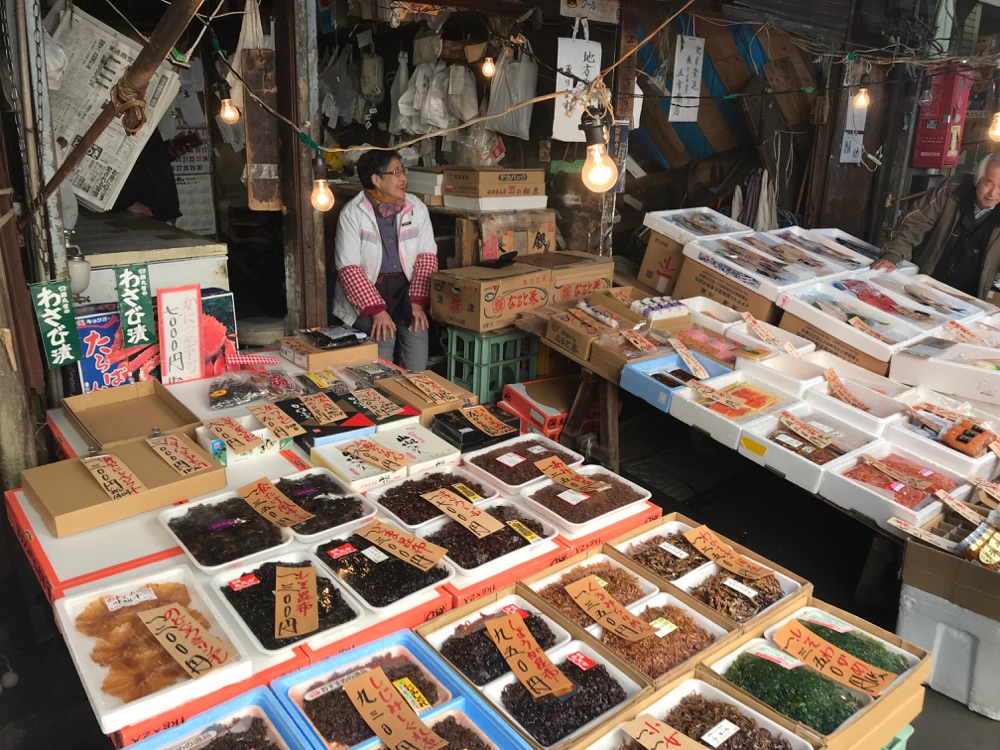
The next morning, for the first full-day of our tour, we went to the old Tsukiji fish market, next to which there is still a thriving open air fish and seafood products market.
It is still a bustling area full of colourful stalls with vendors selling all sorts of delicacies including dried crab and exotic fish items, crumbling seawe
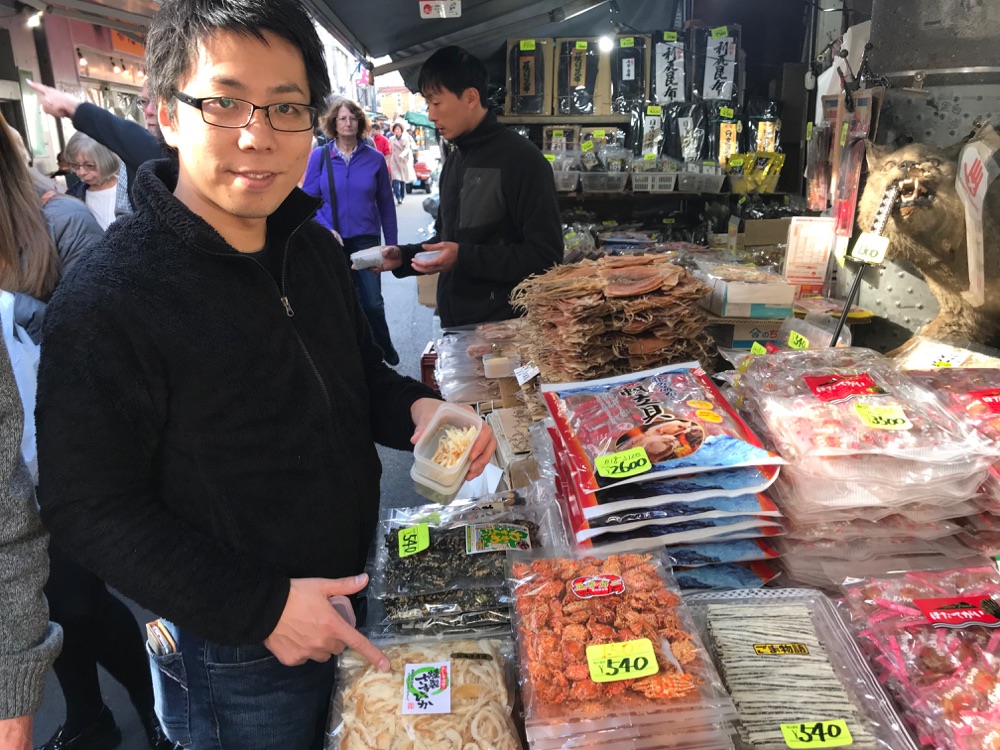
ed crackers spiced with sesame seeds, delicious fried octopus and prawn medallions and much more.
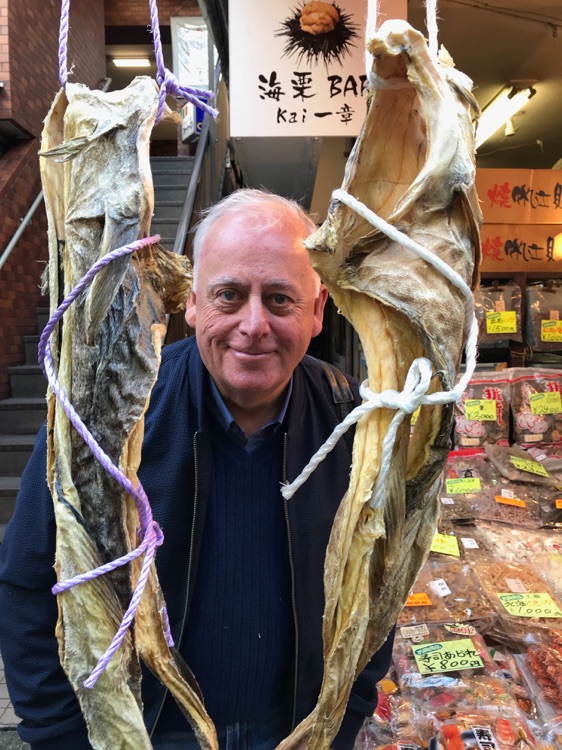
From the fish market, we went to Hama-rikyu Gardens and walked the beautiful gravel paths around the seawater lakes and and enjoy seeing dozens of immaculately pruned pine trees, many turned into exquisite, sculptural works of art.

In one corner of the garden, we saw the 300 year old black pine, planted in 1709 by Tokugawa shogun.
This tree is now propped up by heavy posts that have been beautifully positioned and designed in order to preserve the aesthetic integrity of the tree’s shape and years of growth.
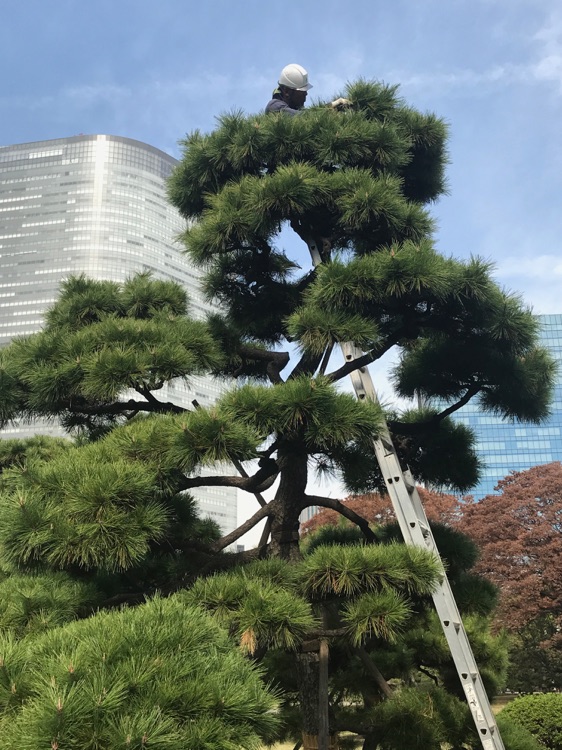
We were also lucky to catch one of the garden’s caretakers working up a ladder in one very fine pine tree to prepare the tree for winter.

Many trees also had their trunks wrapped with a kobo-maki, a special straw mat, designed to protect the tree from insects and caterpillars. These predators are captured in the straw, which is removed and disposed of in February.

Another fascinating aspect of the garden’s winterizing program is the installations of “snow slings” which consists of parasol-shaped frames of bamboo poles with strings forming a protective outer barrier.
This wigwam-like structure keeps the heavy snow from crushing trees and breaking branches.

The lakes in this garden are seawater and the flow is controlled by locks but the overall look is still serene and graceful and you can see herons and cranes looking for breakfast on the banks here and there.

From the garden, we took a short boat ride down the Sumida river to visit the Senso-ji Temple area, one of the most famous tourist attractions in the Asakusa neighbourhood.

Here, it is popular for young women to dress up in traditional kimonos for fun. This is also a fun feature for tourists who love to be photographed with these ladies wearing such colourful outfits.
swhysall@hotmail.com

